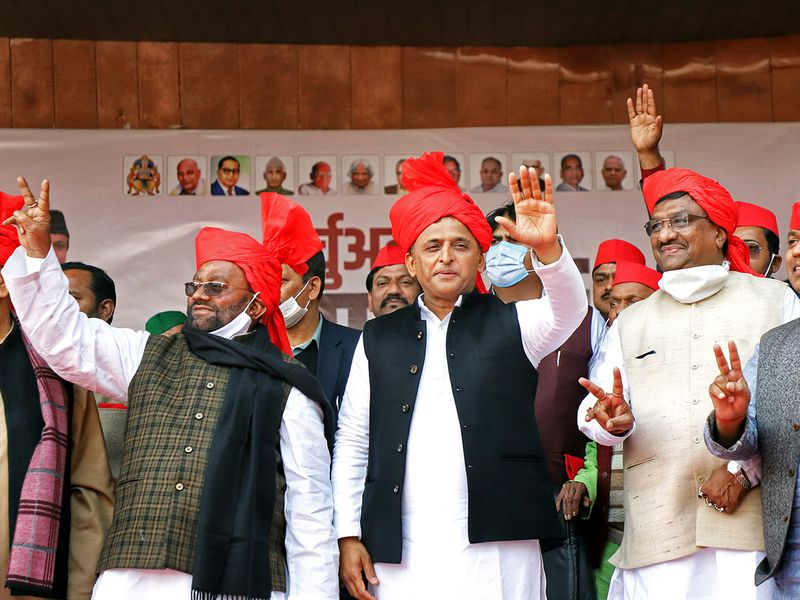
A mini earthquake has shaken Indian politics this past week, and for a change, it has struck the mighty ruling party, the Bharatiya Janata Party (BJP). Just weeks before elections take place in India’s largest and most electorally crucial state of Uttar Pradesh, nearly a dozen legislators including 3 top ministers, dramatically quit the party and the Yogi Adityanath government.
All of them have alleged the neglect of Dalits and backward castes, a huge blow to the BJP’s efforts to woo these castes for votes. As expected, sections of the pro BJP or godi media have bent over backwards in recent days to play down these shocking defections as those by “disgruntled” MLAs who were going to be dropped anyway while others have whispered about a “masterstroke” by the modern day Chanakya, Amit Shah, to cut Adityanath down to size.
Indeed, the political rumour mills have been abuzz for some time with stories of how the Prime Minister does not see eye to eye with the man many in the Sangh Parivar see as a successor to Modi — Adityanath. There was also commentary this week that the defections by sitting legislators do not mean that the BJP could lose UP and that these MLAs may have got it spectacularly wrong. That is entirely possible.
Look at what happened in West Bengal for example, where senior Trinamool Congress (TMC) leaders jumped ship to the BJP ahead of the state elections, only to find Mamata Banerjee back in power with a bang. Some of those leaders have meekly made a comeback to the TMC since then.
But there is a crucial difference: most of the defections we hear about in recent years have to TO the BJP, rarely FROM the party. It is no secret that several central agencies have been used by the BJP government to put pressure on opposition leaders to make the switch.
In the case of UP, the defections are therefore significant because they are taking place FROM the powerful ruling party TO the opposition. They are taking place in the state that is the jewel in the BJP’s big crown — UP, where the party is in power with 312 of the 403 seats in the assembly and is looking to consolidate ahead of the 2024 general elections.
Yogi-Modi combine?
Not a day goes by without one seeing a huge UP government advertisement in all major Indian newspapers, with the Prime Minister and Yogi Adityanath pictures side by side.
The resignations of those who have left is also significant. Three of them were sitting ministers including Swami Prasad Maurya, who had joined the BJP in 2016 after a stint with the BSP as Mayawati’s number 2. He cited the neglect to backward castes by the Yogi government as his reason for leaving.

In fact, that’s the reason cited by the other two ministers who quit after him, all saying that Dalits and backwards have been neglected and marginalised. It is obvious that this is not actually the reason for their last minute switch. Indian politics is a funny thing where politicians suddenly see the light just before an election. In fact, they don’t simply switch parties but also do complete about turns on their ideology.
No, it is simply and purely opportunism. But even so, these defections have dealt a big blow to the Yogi government’s image of invincibility and to the BJP’s efforts to woo Other Backward Class (OBC) votes as well as the image of the Chief Minister himself. Adityanath has been a polarising leader even within his own party.
His track record by all accounts that have been fact checked, leaves plenty to be desired, whether it is handling the COVID second wave, farmers’ issues and more. Going into an election with the image of being “pro upper caste” definitely puts the BJP on the back foot.
The party’s main rival in UP, Akhilesh Yadav’s Samajwadi Party is hoping to make gains in the non Yadav OBC vote bank which it is aggressively eyeing. Non Yadav OBCs are estimated to constitute over 35% of the electorate.
It isn’t clear if Akhilesh Yadav will succeed in this gambit. The 7 phase poll kicks off next month and that is a very long time in politics. But the significance of these exits from the BJP cannot be played down. At the very least it indicates that a real fight is on the cards.











